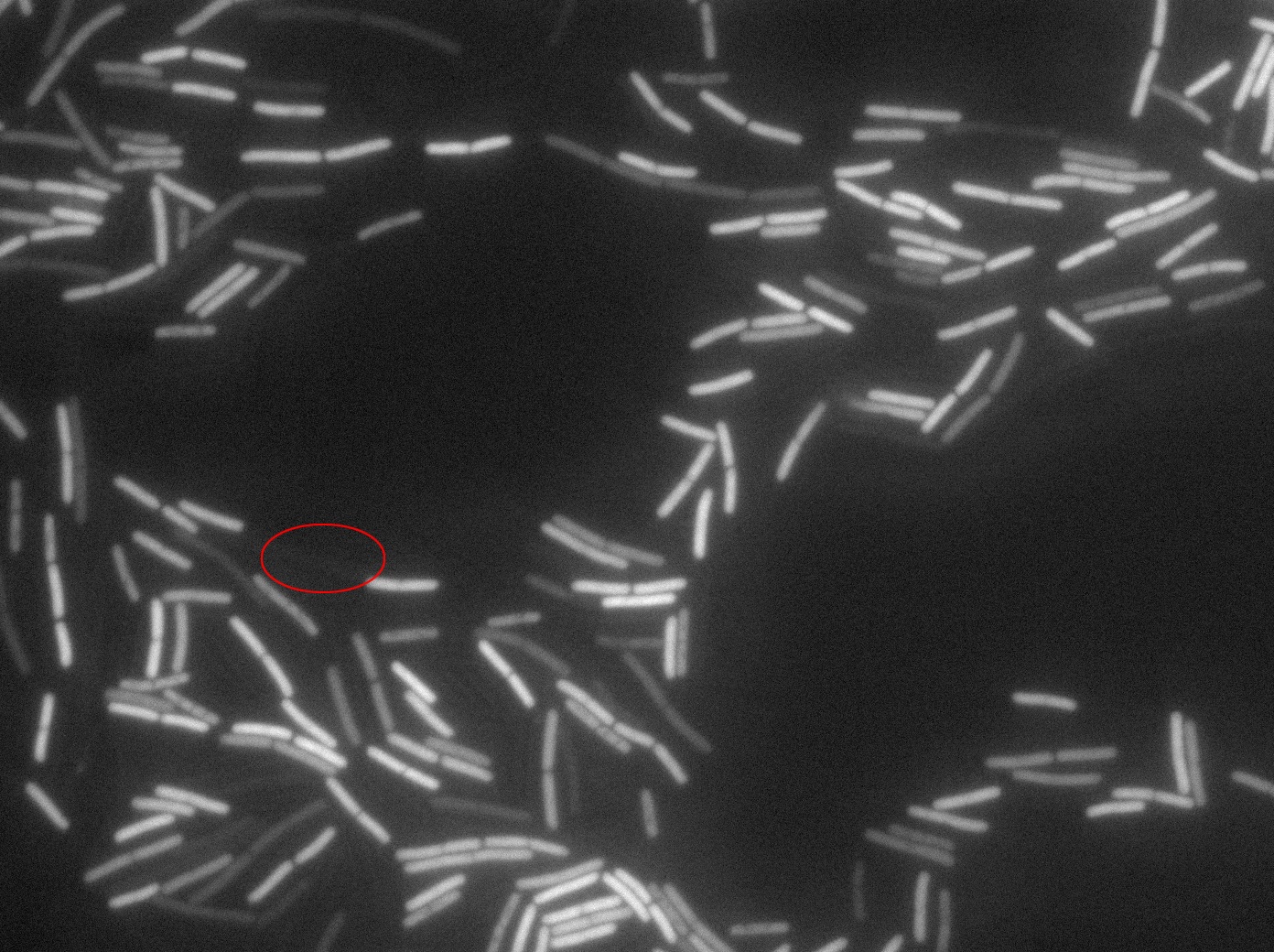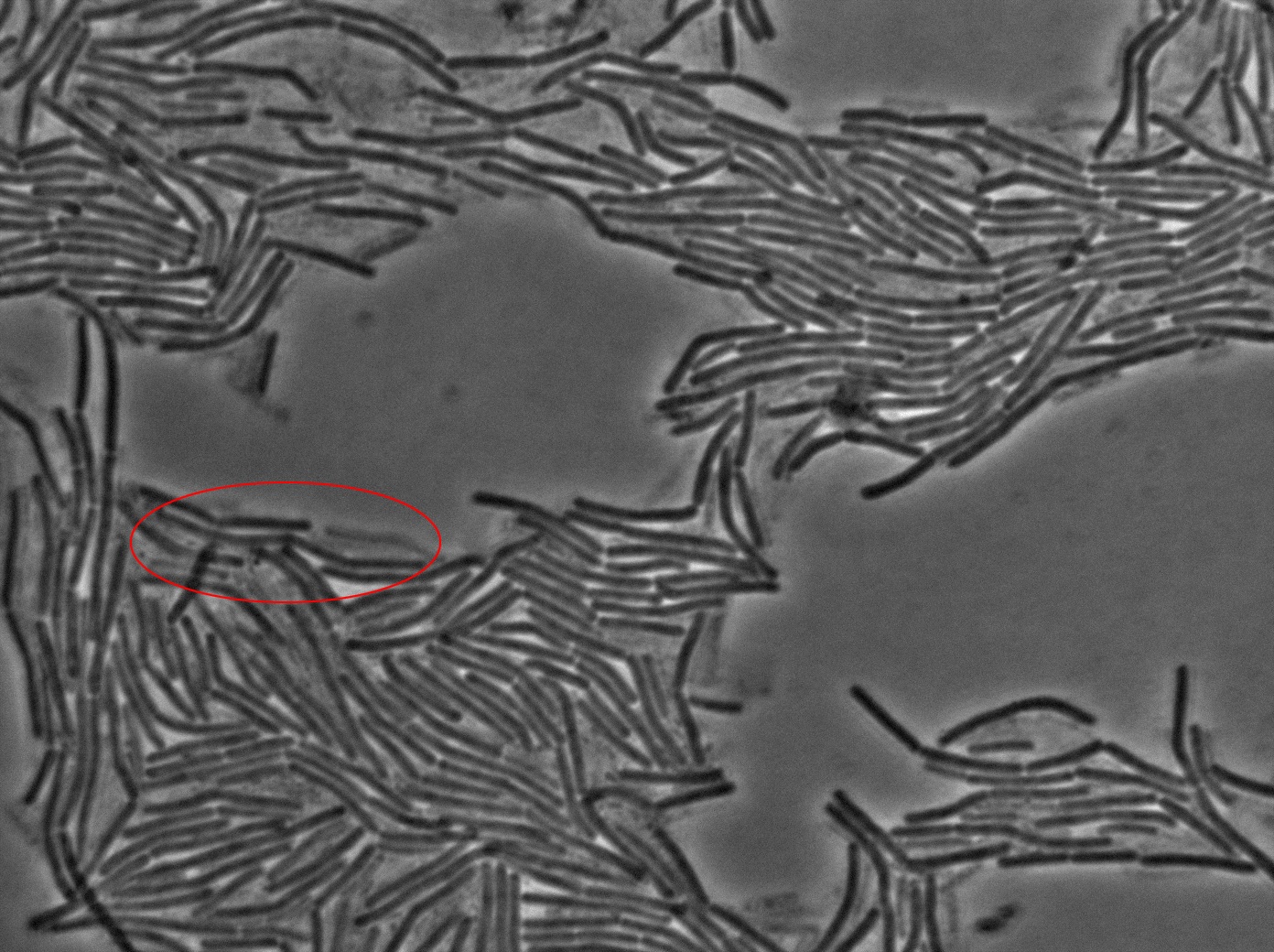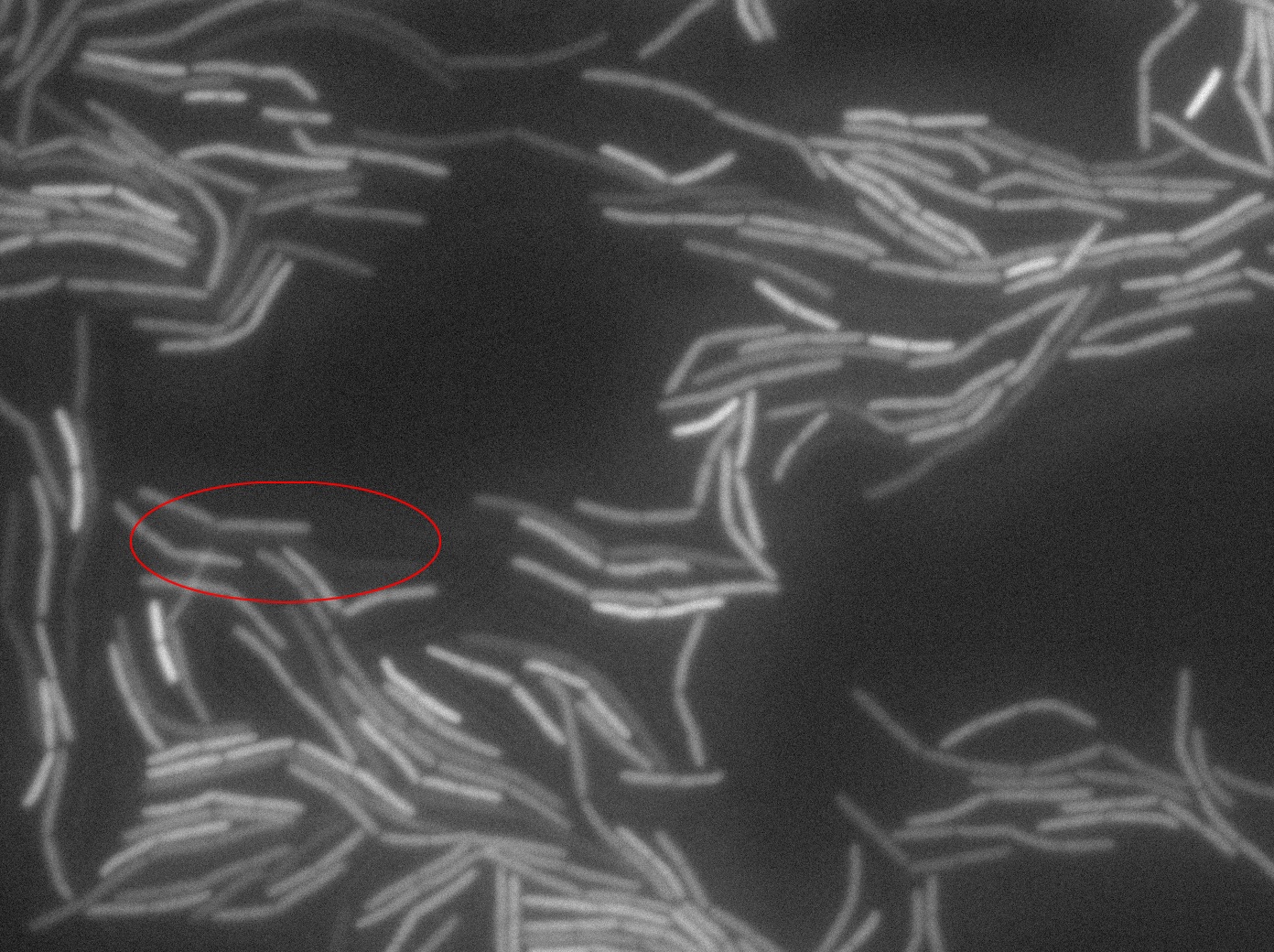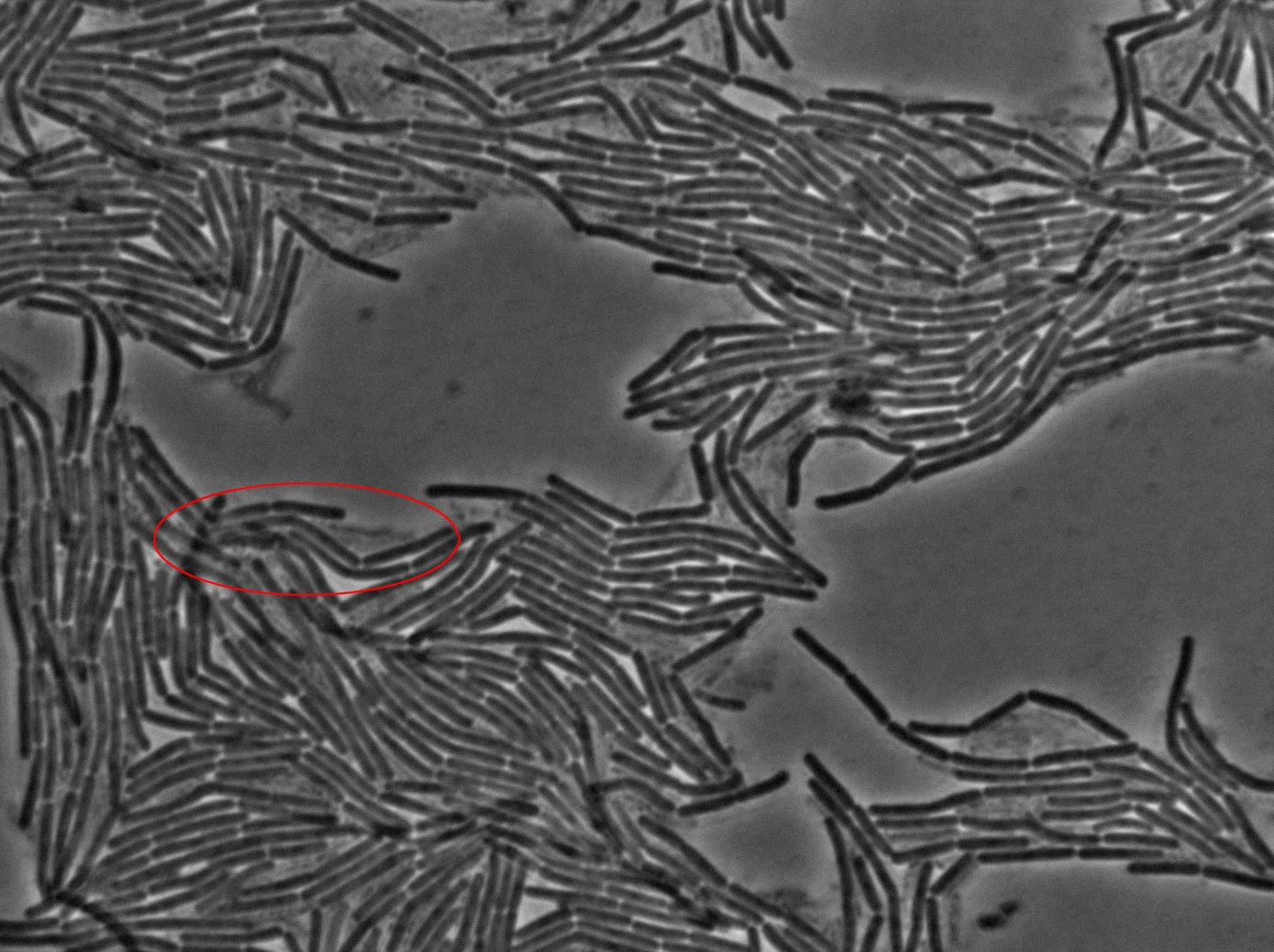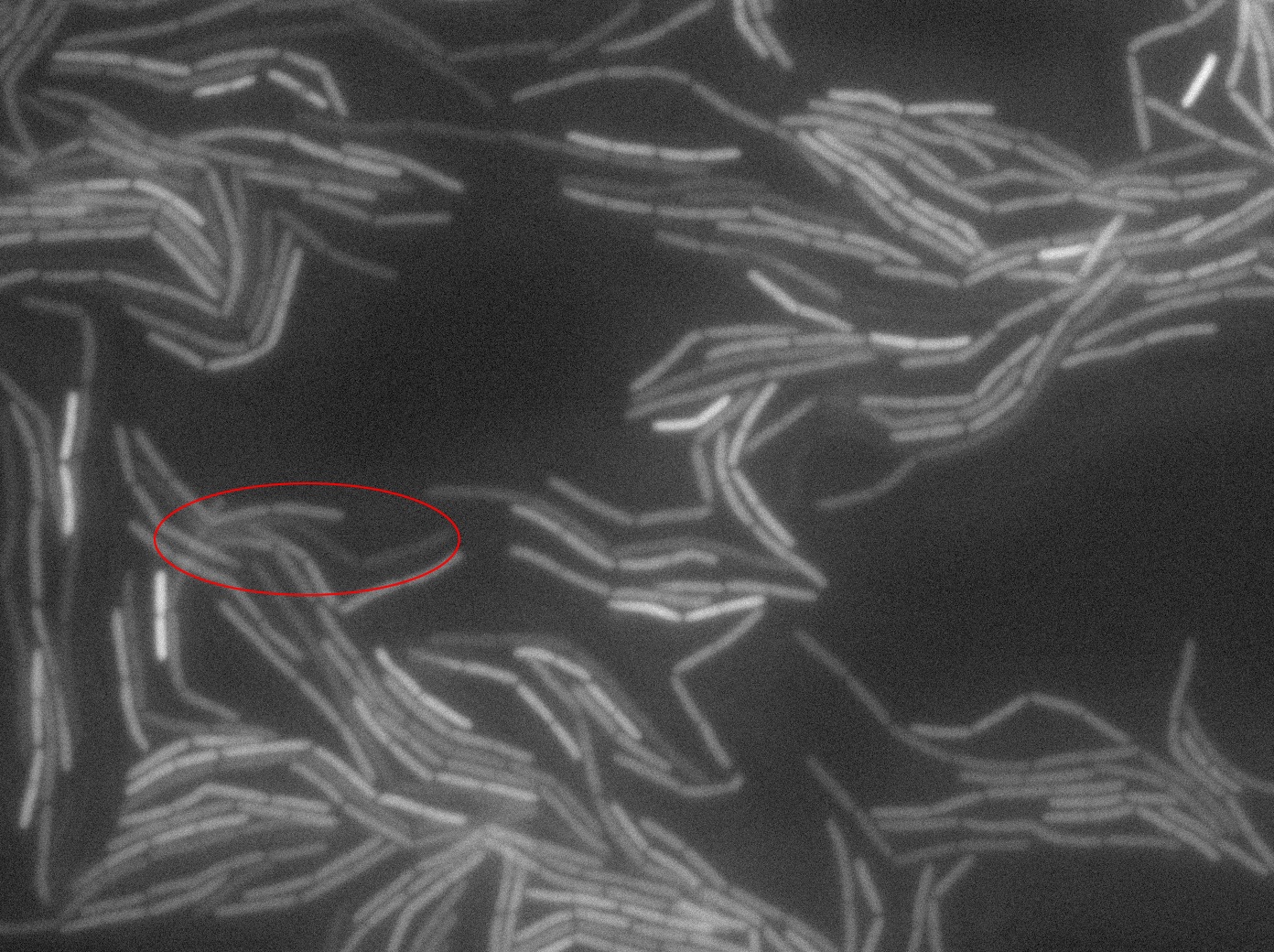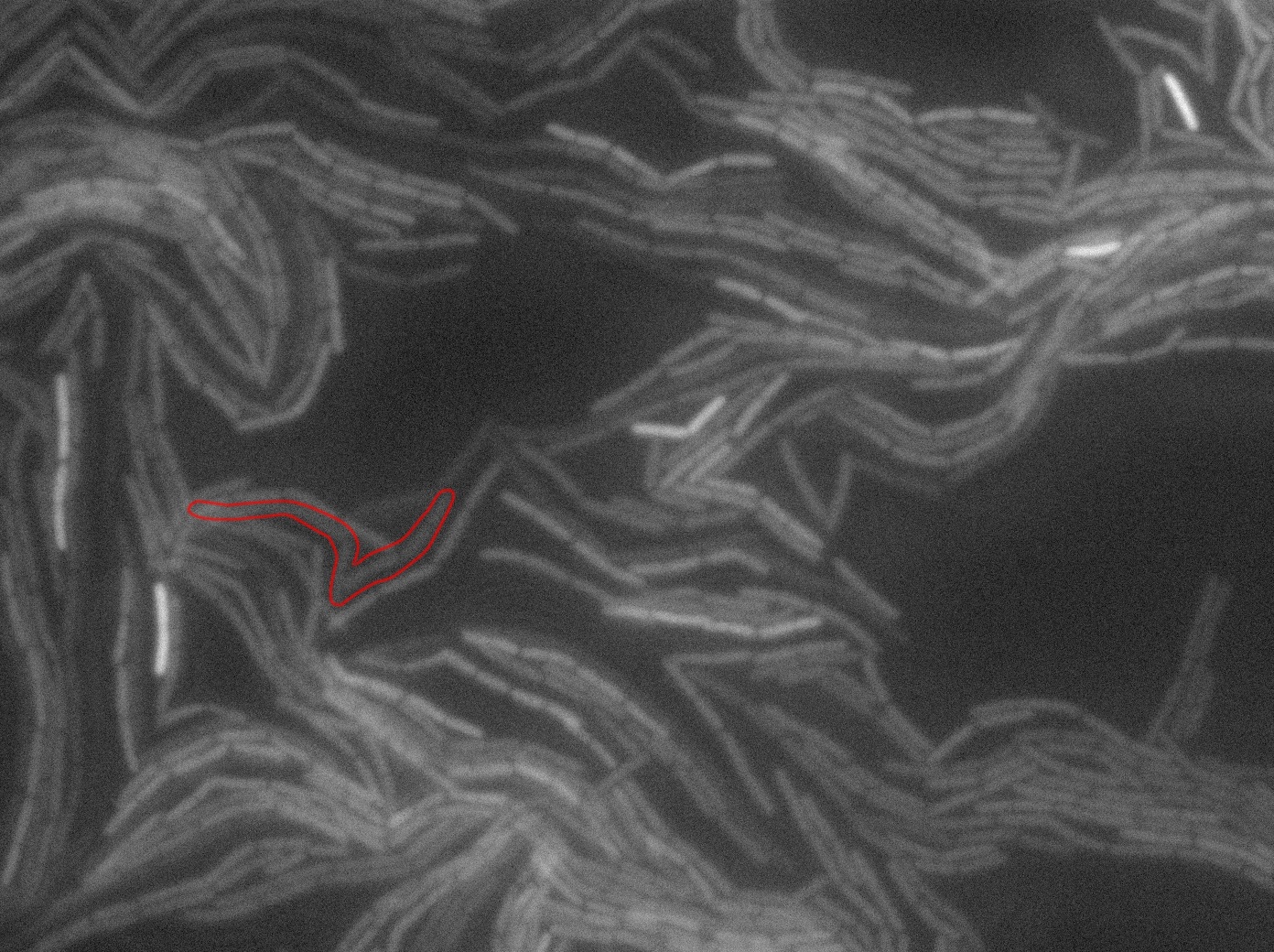Team:Paris Bettencourt/GFP diff
From 2011.igem.org
| Line 4: | Line 4: | ||
<h2>The original experiment</h2> | <h2>The original experiment</h2> | ||
<p>The keystone experiment of the Dubey and Ben-Yehuda paper <a href="http://bms.ucsf.edu/sites/ucsf-bms.ixm.ca/files/marjordan_06022011.pdf">[1]</a> is a simple experiment. We use one strain of <i>gfp + B.subtilis</i> and one <i>gfp - B.subtilis</i> strain. The two strains of <i>B.subtilis</i> are put together (ratio 1:1) on an LB-agarose (1.5%) plate in exponantial phase. The goal is to have a <em>monolayer of densely packed cells</em>.</p> | <p>The keystone experiment of the Dubey and Ben-Yehuda paper <a href="http://bms.ucsf.edu/sites/ucsf-bms.ixm.ca/files/marjordan_06022011.pdf">[1]</a> is a simple experiment. We use one strain of <i>gfp + B.subtilis</i> and one <i>gfp - B.subtilis</i> strain. The two strains of <i>B.subtilis</i> are put together (ratio 1:1) on an LB-agarose (1.5%) plate in exponantial phase. The goal is to have a <em>monolayer of densely packed cells</em>.</p> | ||
| - | <p>The plated bacteria are then observed through fluorescent microscopy. After a while (between | + | <p>The plated bacteria are then observed through fluorescent microscopy. After a while (between 15 minutes and 2 hours), a transfer of GFP can be observed from the <i>gfp +</i> cells towards the <i>gfp-</i> cells. This cell-to-cell communication was previously unheard of and the original paper <a href="http://bms.ucsf.edu/sites/ucsf-bms.ixm.ca/files/marjordan_06022011.pdf">[1]</a> strongly suggest that the so-called nanotubes observed through electronic microscopy by the authors is the reason of this transfer.</p> |
<h2>Our experiment</h2> | <h2>Our experiment</h2> | ||
<p>We tried for a long time to re-do this apparently simple experiment. We failed for a long time, mainly because of microscopy issues. The advice the Ben-Yehuda team kindly gave us was to concentrate the cells as much as possible but to focus on the creation of the monolayer. Plating the cells properly is actually more important than the actual concentration of the liquid mix.</p> | <p>We tried for a long time to re-do this apparently simple experiment. We failed for a long time, mainly because of microscopy issues. The advice the Ben-Yehuda team kindly gave us was to concentrate the cells as much as possible but to focus on the creation of the monolayer. Plating the cells properly is actually more important than the actual concentration of the liquid mix.</p> | ||
Revision as of 17:20, 17 September 2011

GFP diffusion
The original experiment
The keystone experiment of the Dubey and Ben-Yehuda paper [1] is a simple experiment. We use one strain of gfp + B.subtilis and one gfp - B.subtilis strain. The two strains of B.subtilis are put together (ratio 1:1) on an LB-agarose (1.5%) plate in exponantial phase. The goal is to have a monolayer of densely packed cells.
The plated bacteria are then observed through fluorescent microscopy. After a while (between 15 minutes and 2 hours), a transfer of GFP can be observed from the gfp + cells towards the gfp- cells. This cell-to-cell communication was previously unheard of and the original paper [1] strongly suggest that the so-called nanotubes observed through electronic microscopy by the authors is the reason of this transfer.
Our experiment
We tried for a long time to re-do this apparently simple experiment. We failed for a long time, mainly because of microscopy issues. The advice the Ben-Yehuda team kindly gave us was to concentrate the cells as much as possible but to focus on the creation of the monolayer. Plating the cells properly is actually more important than the actual concentration of the liquid mix.
We began our experiments with a PY79 strain (as in the paper) but found quickly that our fluorescent version of this strain was rather weak. We prefered to work on a 3610 strain at the end of August and the beginning of September as we has a strong fluorescence from this one.
Finally, after several tries, we managed to reproduce the result expected: GFP diffusion between cells!
You can find out more about this exciting day on the Notebook.
Conclusions of our experiment
- We have evidences of a cell-to-cell GFP transfer. This is probably a non-specific transfer (as GFP is not a natural protein for B.subtilis) and according to the Dubey and Ben-Yehuda paper [1], we can strongly syspect that it is done through nanotubes.
- Reproducing the original experiment is difficult. We were able to observe the expected behaviour in very few cells. This means either that the transfer is very rare or that we need to improve the preparation of the slide.
- We used a different strain (3610 instead of PY79). This means the transfer is not observed only in PY79.
- We proved that we will be able to see the results of our designs once we test them.
 "
"


